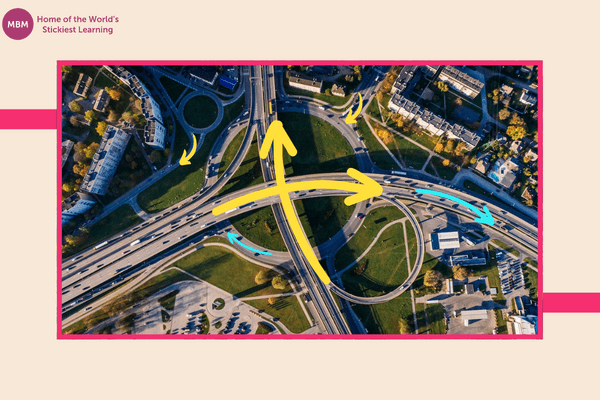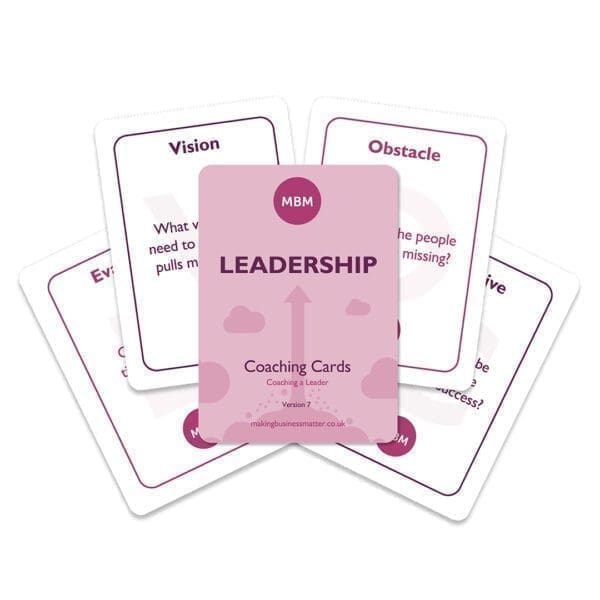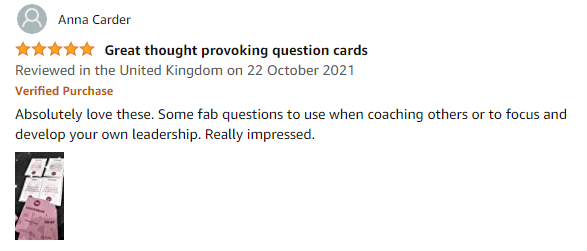Discover the Framework for Unleashing Your Full Potential for Unprecedented Success!
Before we get into leadership frameworks, try this simple exercise. Imagine a world without leaders, where organisations operate in chaos, teams lack direction, and visions remain unrealised.
That’s a horrible world, isn’t it?
Well, leadership is the invisible force that propels individuals and organisations towards greatness. In so doing, it shapes the course of history and drives transformative change.
But what separates an exceptional leader from an ordinary one? How can we harness the full potential of leadership to achieve remarkable results?
Welcome to a journey through the realms of leadership frameworks. Here we unravel the secrets to effective leadership and empower you with the tools to unlock your leadership prowess.
Whether you aspire to lead a multinational corporation, a team of dedicated professionals, or even your own life, understanding and implementing a leadership framework will be your compass on this path to success.
To start, in this article, we delve into the captivating world of leadership frameworks, illuminating the diverse methodologies and strategies that have propelled leaders to greatness throughout history. Also, we will explore the fundamental elements that underpin these frameworks, examine real-life case studies of their successful application, and unravel the challenges that come with implementing them in today’s rapidly evolving landscape.
But this isn’t just a theoretical exploration; it’s a call to action. By the time you finish reading, you will be equipped with the knowledge and inspiration to develop your own leadership framework or refine the existing one within your organisation.
So whether you’re a seasoned executive, an aspiring entrepreneur, or an emerging leader, this article will provide valuable insights and practical guidance to transform your leadership approach and unleash your true potential.

What is a Leadership Framework?
A leadership framework serves as a comprehensive roadmap that outlines the principles, strategies, and behaviours required to lead effectively. It is a structured approach that provides leaders with a systematic way to understand and navigate the complexities of their roles.
At its core, a leadership framework encapsulates the core values, guiding principles, and desired outcomes of leadership within a particular context, be it an organisation, a community, or a nation.
What is the Purpose of a Leadership Framework?
A leadership framework plays a pivotal role in shaping the culture and direction of an organisation or group. Particularly, it establishes a shared understanding of what effective leadership looks like, fostering consistency and alignment across all levels.
Furthermore, by providing a clear structure, it empowers leaders with a sense of purpose and direction, enabling them to make informed decisions and inspire their teams towards a common vision.
On the same note, a leadership framework promotes accountability, as it sets the expectations for leaders’ behaviours and performance, ensuring that they uphold the values and standards of the organisation.
What Are Some Common Leadership Frameworks?

Sticky Learning ® is 7 times more effective than 1-day training courses. Plus, you will get a Chain of Evidence proving your Return on Investment. Discover soft skills training that changes behaviours long term.

#1- Trait-based Leadership Frameworks
Trait-based leadership frameworks focus on identifying and cultivating specific personality traits and characteristics that are believed to contribute to effective leadership. These frameworks emphasise innate qualities such as confidence, integrity, empathy, and decisiveness.
All in all, they suggest that individuals possessing these traits are more likely to succeed as leaders. However, critics argue that trait-based frameworks overlook the importance of skills and behaviours that can be learned and developed, limiting their applicability and effectiveness.
#2- Behavioural Leadership Frameworks
Contrarily, behavioural leadership frameworks shift the focus from inherent traits to observable behaviours. These frameworks explore the actions and conduct of leaders, emphasising the impact of their behaviours on followers and overall organisational performance.
Moreover, they identify key behaviours such as communication, motivation, delegation, and conflict resolution, providing a framework for leaders to assess and improve their effectiveness. Additionally, behavioural frameworks offer practical guidance and can be useful in developing leadership skills through training and coaching programs.
Related: Check out our training courses for developing crucial life skills.
#4- Situational Leadership Frameworks
Situational leadership frameworks propose that effective leadership depends on the ability to adapt and adjust one’s leadership style based on the specific situation and the needs of the followers.
Furthermore, these frameworks recognise that different situations call for different approaches, ranging from providing clear instructions and guidance to delegating authority and empowering team members. Also, situational leadership frameworks encourage leaders to be flexible and responsive, tailoring their leadership style to the circumstances at hand.
#5- Transformational Leadership Frameworks
Transformational leadership frameworks focus on inspiring and motivating followers to achieve extraordinary outcomes. With that said, leaders who embrace a transformational approach challenge the status quo, articulate a compelling vision, and empower their teams to reach their full potential.
All in all, these frameworks emphasise the importance of charisma, intellectual stimulation, individualised consideration, and inspirational motivation. Not surprisingly, transformational leadership frameworks have gained significant popularity due to their ability to foster innovation, engagement, and organisational change.
#5- Servant Leadership Frameworks
Servant leadership frameworks centre on the idea that true leadership involves serving others rather than seeking personal power or glory. In brief, leaders who adopt a servant leadership approach prioritise the needs of their team members and work to support their growth and well-being. Also, they exhibit empathy, humility, and a commitment to developing the capabilities of their followers. Servant leadership frameworks also promote trust, collaboration, and a sense of purpose, creating a positive and productive work environment.
Key Elements of an Effective Leadership Framework

1. Clear Vision and Purpose
Firstly, a clear vision and purpose are foundational elements of an effective leadership framework. In other words, a leader must have a compelling vision that defines the desired future state and inspires others to rally behind it.
The vision provides a sense of direction and purpose, guiding decision-making and actions. Additionally, a well-defined purpose clarifies the underlying values and principles that drive the leader and the organisation, serving as a moral compass for ethical leadership.
2. Core Values and Ethics
Core values and ethics form the ethical framework within which leaders operate. These values define the organisation’s culture and guide the behaviours and decisions of its leaders. More specifically, leaders who adhere to a strong set of core values and ethics foster trust, integrity, and accountability. These values should align with the overall organisational values, promoting consistency and coherence in leadership behaviours.
3. Competencies and Skills
An effective leadership framework incorporates the identification and development of key competencies and skills. Moreover, these competencies encompass a broad range of abilities, including strategic thinking, emotional intelligence, communication, problem-solving, and adaptability. Additionally, by focusing on developing these competencies, leaders can enhance their effectiveness and navigate the complexities of their roles with confidence.
4. Decision-making Processes
Decision-making is a critical aspect of leadership. A robust leadership framework includes clear processes for decision-making, ensuring that leaders make informed and timely choices. On the same note, it establishes guidelines for gathering information, evaluating options, and considering diverse perspectives. Additionally, effective decision-making frameworks encourage collaboration and involve stakeholders, fostering a sense of ownership and buy-in.


5. Communication Strategies
Communication is a vital skill for leaders to effectively convey their vision, provide feedback, and inspire their teams. With that said, understand that a leadership framework emphasises the importance of effective communication strategies.
This includes not only the ability to articulate ideas clearly but also active listening and fostering open dialogue. Above all, effective communication builds trust, enhances collaboration, and ensures alignment with organisational goals.
6. Performance Evaluation and Feedback Mechanisms
An effective leadership framework includes mechanisms for evaluating performance and providing feedback. Consequently, these mechanisms help leaders understand their strengths and areas for improvement, enabling continuous growth.
Performance evaluations may involve regular assessments, 360-degree feedback, or self-reflection exercises. Additionally, by providing constructive feedback and development opportunities, the framework supports leaders in their journey towards ongoing improvement.
What You Need to Know for Implementing
Assessing Organisational Needs
Before implementing a leadership framework, it is essential to assess the specific needs and challenges within the organisation. This involves evaluating the current leadership landscape, identifying areas for improvement, and understanding the organisational culture and goals.
Even more, conducting assessments, surveys, and interviews can provide valuable insights into the strengths and weaknesses of the existing leadership practices. By so doing, you help to tailor the framework to address specific organisational needs.
Developing a Customised Framework
Once the organisational needs are identified, the next crucial step is to develop a customised leadership framework. This involves aligning the framework with the organisation’s values, vision, and strategic objectives.
Furthermore, the framework should incorporate elements that reflect the unique context and culture of the organisation. In detail, it may involve defining leadership competencies, outlining desired behaviours, and establishing guidelines for decision-making and communication. Additionally, collaboration with key stakeholders, including leaders and employees, can significantly enhance the relevance and acceptance of the framework.
Communicating and Training on the Framework
For a leadership framework to be effective, it is crucial to communicate it clearly and provide training to leaders at all levels. Additionally, communication efforts should emphasise the purpose, benefits, and expectations of the framework.
Furthermore, leaders should understand how the framework aligns with organisational goals and how it supports their development. Not only that, but training programs can provide leaders with the necessary knowledge and skills to embrace and implement the framework successfully. These programs may include workshops, seminars, coaching, and mentoring opportunities.

>> Coaching cards bundle pack <<
Integrating the Framework into Organisational Processes
To ensure the practical application of the leadership framework, it must be integrated into various organisational processes. This involves aligning performance management systems, talent development programs, and succession planning with the framework’s principles and expectations.
By incorporating the framework into day-to-day operations, leaders can consistently apply its concepts, values, and behaviours. Integration may also involve adapting existing policies, procedures, and decision-making structures to be in harmony with the framework, reinforcing its importance and relevance.
Now that you are informed on implementing a leadership framework, this takes us to our next point…
Challenges and Limitations That May Come Along

1- Resistance to Change
First off, implementing a leadership framework can encounter resistance from leaders and employees who are accustomed to existing practices or fear the unknown. Resistance to change may arise due to concerns about increased expectations, shifts in power dynamics, or scepticism about the effectiveness of the framework.
Overcoming resistance requires effective change management strategies, including clear communication, addressing concerns, and demonstrating the benefits and relevance of the framework.
2- Cultural and Contextual Factors
Leadership frameworks may face challenges in adapting to diverse cultural and contextual factors. Put another way, what works effectively in one organisation or culture may not be directly applicable in another.
Cultural norms, values, and expectations shape leadership behaviours, and frameworks need to consider these factors to ensure their applicability and acceptance. Therefore, tailoring the framework to specific cultural and contextual nuances can enhance its effectiveness and relevance within different organisational environments.
2- Overemphasis on a Single Framework
An overemphasis on a single leadership framework can limit the potential for diverse leadership approaches and styles. While frameworks provide structure and guidance, leaders should also be encouraged to draw from multiple frameworks or adapt their approach based on situational needs.
It’s important to note that rigid adherence to a single framework may stifle creativity, innovation, and the ability to respond to dynamic and complex challenges. As a fix, embracing flexibility and encouraging leaders to leverage different frameworks can lead to more adaptive and agile leadership.
3- Adapting to Rapidly Changing Environments
Leadership frameworks may face challenges in adapting to rapidly changing environments, such as technological advancements, shifting market dynamics, or disruptive industry trends. As a result, the pace of change requires leaders to be agile and responsive, often necessitating adjustments to leadership practices and frameworks.
On the contrary, a static framework may struggle to keep up with the evolving demands of the business landscape. Therefore regular evaluation, feedback loops, and continuous improvement processes are essential to ensure that the leadership framework remains relevant and effective in dynamic environments.
Benefits and Impact of a Well-implemented Leadership Framework

1. Improved Leadership Effectiveness
A well-implemented leadership framework enhances leadership effectiveness across all levels of an organisation. By providing a clear roadmap and expectations, the framework equips leaders with the necessary tools and guidance to make informed decisions and lead with confidence.
On the same positive note, it fosters the development of key competencies. These are competencies such as communication, problem-solving, and emotional intelligence, resulting in more effective leadership behaviours. Importantly, improved leadership effectiveness has a direct impact on team performance, employee engagement, and organisational success.
2. Enhanced Organisational Culture
A leadership framework contributes significantly to the development of a positive and productive organisational culture. Additionally, by defining the values and expected behaviours of leaders, the framework sets a standard for conduct and integrity. Moreover, it promotes transparency, fairness, and accountability, fostering a culture of trust and respect.
Furthermore, leaders who embody the framework’s principles serve as role models, inspiring others to emulate these behaviours. Above all, a healthy organisational culture built on a well-implemented leadership framework enhances employee satisfaction, promotes collaboration, and attracts top talent.
3. Succession Planning and Talent Development
A leadership framework serves as a valuable tool for succession planning and talent development within an organisation. It provides a clear roadmap for identifying and nurturing high-potential individuals. These are individuals who exhibit the desired leadership competencies and behaviours.
By aligning talent development programs with the framework, organisations can systematically groom future leaders, ensuring a smooth transition of leadership roles. The framework also supports the identification of skill gaps and areas for improvement, enabling targeted development initiatives to bridge these gaps and enhance the leadership pipeline.
4. Adaptability and Change Management
A well-implemented leadership framework enhances an organisation’s adaptability and change management capabilities. Furthermore, leaders who are well-versed in the framework are equipped to navigate and lead through complex and rapidly changing environments.
Additionally, the framework provides a foundation for agility and flexibility, encouraging leaders to embrace innovation, adapt to new challenges, and drive organisational change. In essence, by instilling a culture of continuous improvement and learning, the framework enables organisations to proactively respond to market dynamics and stay ahead of the competition.
Conclusion

In conclusion, a well-designed and effectively implemented leadership framework plays a crucial role in guiding leaders and shaping organisational success. Specifically, it provides a clear roadmap, sets expectations, and promotes consistency in leadership behaviours.
By aligning leaders with the organisation’s vision, values, and strategic objectives, a leadership framework enhances leadership effectiveness, fosters a positive organisational culture, and drives performance. Additionally, it supports succession planning and talent development, ensuring a strong leadership pipeline for the future.
While challenges and limitations may arise, addressing them strengthens the framework’s relevance and impact. This can be done through adaptability and continuous improvement
Ultimately, a well-implemented leadership framework empowers leaders to navigate complexities, inspire their teams, and drive positive change, propelling organisations towards sustainable growth and success.




